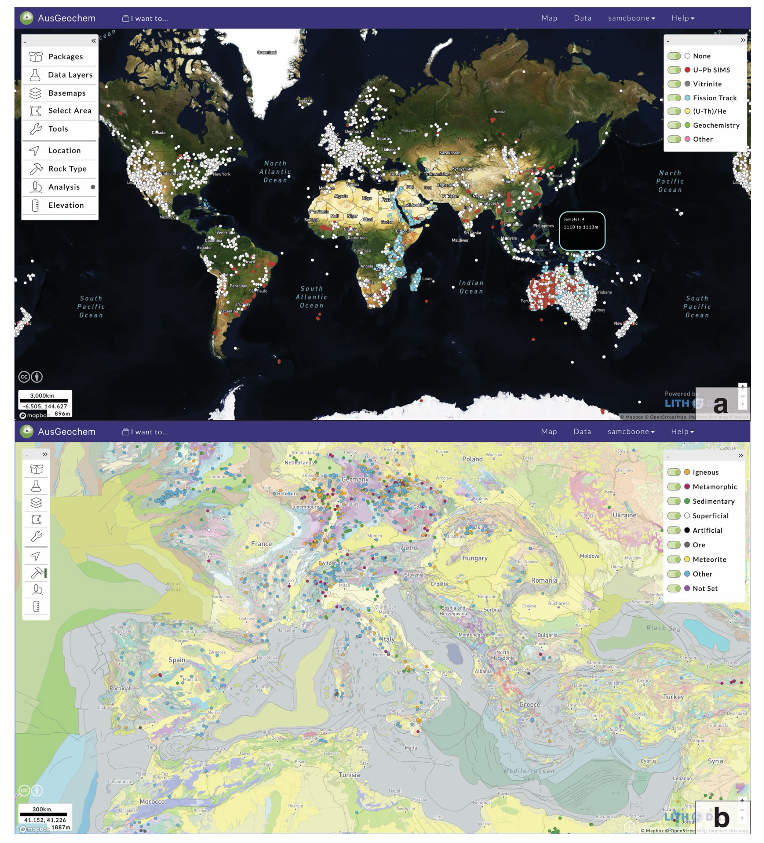Low‐temperature thermochronology is a powerful tool for constraining the thermal evolution of
rocks and minerals in relation to a breadth of tectonic, geodynamic, landscape evolution, and natural resource formation processes through deep time. However, complexities inherent to these analytical techniques can make interpreting the significance of results challenging, requiring them to be placed in their geological context in 4‐dimensions (3D + time). We present a novel tool for the geospatial archival, analysis and dissemination of fission‐track and (U‐Th)/He data, built as an extension to the open‐access AusGeochem platform (https://ausgeochem.auscope.org.au) and freely accessible to scientists from around the world. To demonstrate the power of the platform, three regional datasets from Kenya, Australia and the Red Sea are placed in their 4D geological, geochemical, and geographic contexts, revealing insights into the tectono‐thermal evolutions of these areas. Beyond facilitating data interpretation, the archival of fission track and (U‐Th)/He (meta‐)data in relational schemas unlocks future potential for greater integration of thermochronology and numerical geoscience techniques. The power of formatting data to interface with external tools is demonstrated through the integration of GPlates Web Service with AusGeochem, enabling thermochronology data to be readily viewed in their paleogeographic context through deep time from within the platform.

![]()
